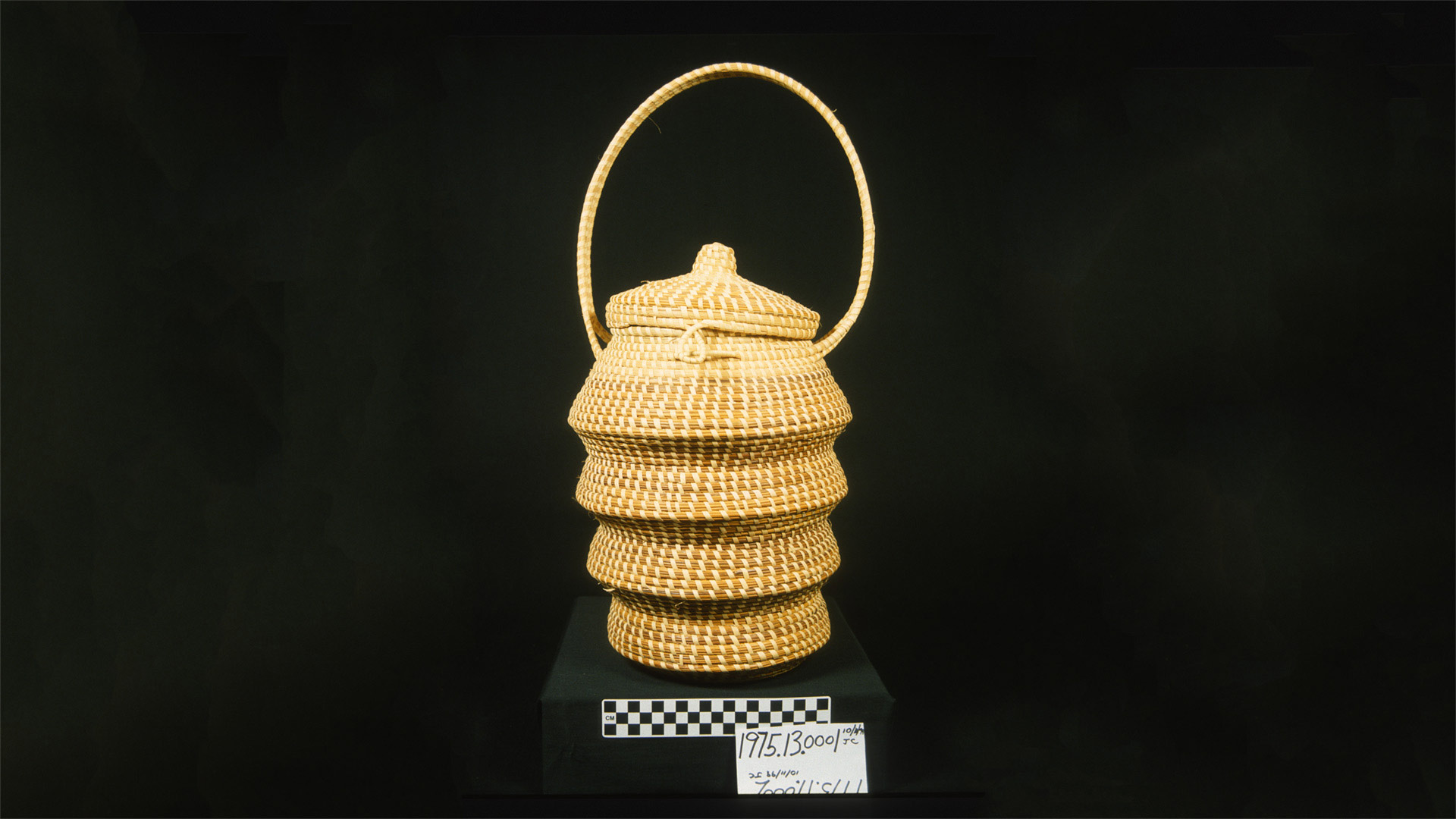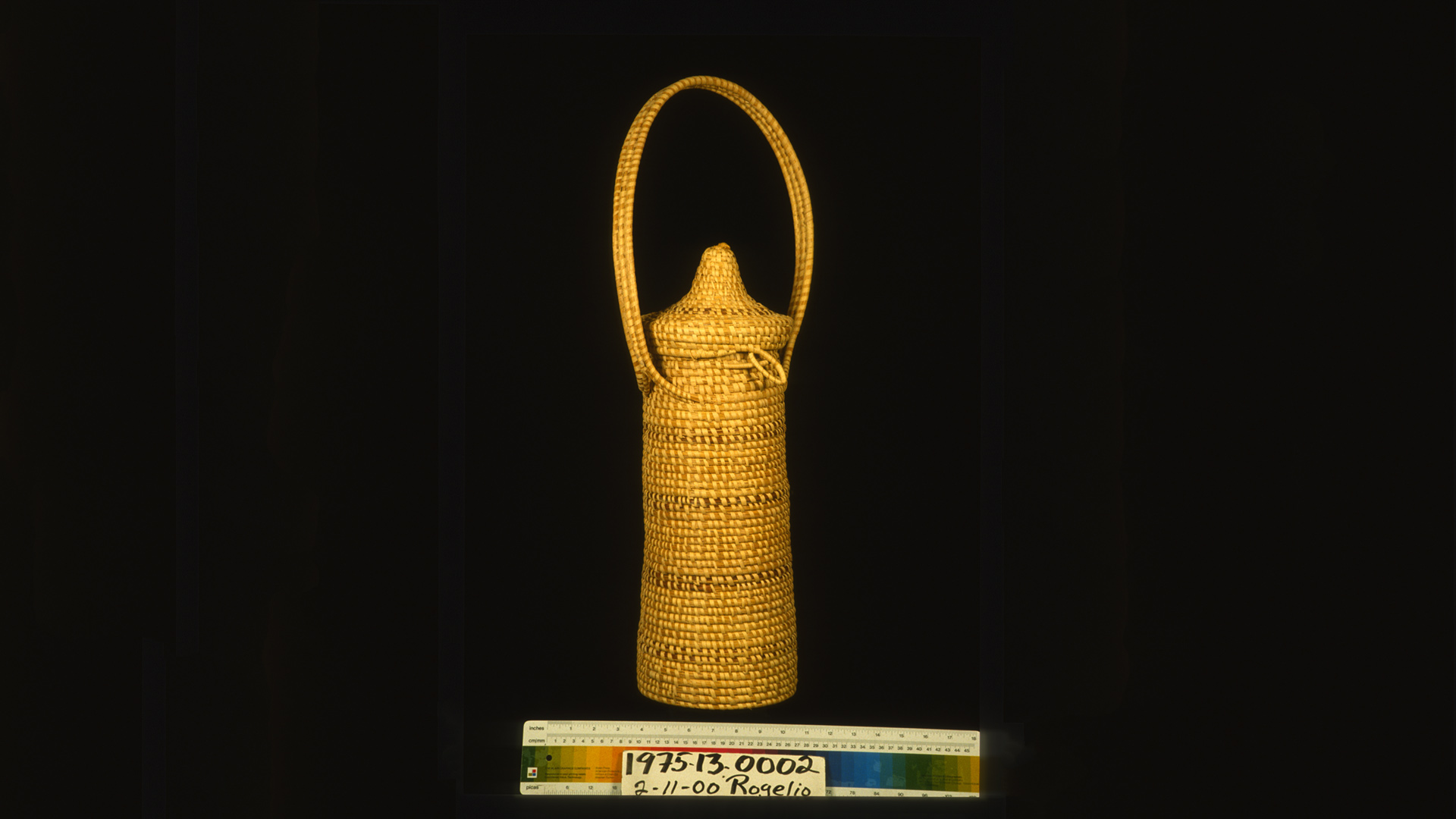
Gullah Baskets and the Mount Pleasant Community
- Post Date: 6/18/2018
- Author: Bethany Johnson, Registration student
- Reading Time: 6 minute read
The Gullah community are groups of African Americans whose origins are along the coasts of South Carolina and Georgia as well as other adjacent sea islands, also known as the Lowcountry. This group of people have been able to preserve more of their African language, culture, rituals, and customs from ancestral communities in Africa than any other group of African Americans. Many arts and crafts created within the Gullah community are indistinguishable from those made in West Africa. These baskets are a visual representation of the preservation of a heritage that was stripped away from so many African Americans.
There are several Gullah baskets in the Spurlock Museum’s collection that were purchased in 1975 directly from artisans of the Mount Pleasant community in South Carolina. One of these is a Flower Basket (1975.17.0002) made by Vera Manigault from sweetgrass, pine needles, and palmetto fronds. A Handbag or Sewing Basket (1975.13.0001) was made by Harriet Barnwell using sweetgrass, pine needles, and palmetto fronds. Another basket in the Spurlock Museum collection, also made by Harriet Barnwell, is a Purse or Sewing Basket (1975.13.0002) made from sweetgrass.
-
 Handbag or Sewing Basket 1975.13.0001
Handbag or Sewing Basket 1975.13.0001
How did the Gullah community come to be? South Carolina was a perfect location for the cultivation of rice, as many plantation owners had realized by the 1600s. However, they also realized that cultivating rice was a very difficult task. Finding cheap, skilled labor to grow the rice became the best option for them. It had become known that Africans, primarily from Sierra Leone, were skilled in growing rice, and thus increased the abduction and enslavement of these peoples to the Lowcountry (Jackson). In 1670, the first English settlement arrived in the coastal plain and swampland that is now known as the Lowcountry. Due to the humid climate and various tropical diseases, the White plantation owners usually stayed away from Lowcountry plantations, as they were most vulnerable to these diseases, and left them to be run by a few White managers and African “drivers” (Jackson). This allowed for a huge cultivation of heritage and culture among the enslaved Africans in the Lowcountry. This heritage and culture has lasted among these people, known as the Gullah people, for hundreds of years now.
-
 Purse or Sewing Basket 1975.13.0002
Purse or Sewing Basket 1975.13.0002
Today, basket-making has become an art form that is practiced and controlled by women. In Mt. Pleasant, South Carolina, where the Museum’s baskets were made, basket-making has become a huge part of their economy. In 1975-1980, there were over 1,500 basket-makers that made their personal income from tourist sales, the vast majority of them being black women (Derby). This African tradition is now passed on from generation to generation, from mother to daughter. These baskets are more than just decorative art pieces, they “contribute to the vitality of socioeconomic and cultural traditions of black people throughout the African diaspora” (Derby).
“Later, I realized that my mother had taught me more than just an art form. She put me in touch with my past, with my ancestors who brought this tradition with them as slaves from Africa.”-- Mary Jackson, Mt. Pleasant basket-maker
The Gullah people again face displacement from their own traditional lands and cultural traditions due to the rise of tourism and the private residential development. Their economy is vulnerable due to effects of globalization, rising urbanization, climate change, decreasing access to and displacement from their land (Meyers). Large scale development in Mt. Pleasant alone has forced many basket stands to move up north, while others are completely displaced. This leaves many of these makers with little to no income. There is also a huge decline in sweetgrass materials needed for the baskets due to private development of coastal islands and marshlands. Costly and lengthy trips to Georgia or Florida has become imperative just to gather the necessary materials.
-
 Flower Basket 1975.17.0002
Flower Basket 1975.17.0002
The Gullah people, their history, and heritage are a part of American history. Every other group of black people in America have had practically their entire ancestral culture taken forcefully from them. It is a struggle for black Americans to search for these African roots that they have no real knowledge of. The Gullah people’s culture is now being forcefully stripped from them also. There needs to be an increased public interest as well as political help and research in order to sustain the environment and economy necessary for the art. If not, the Gullah people will be yet another case of African Americans being deprived of a heritage that has kept their community so strong for over 300 years.
-
- Share:
- Subscribe to Newletter
- Giving